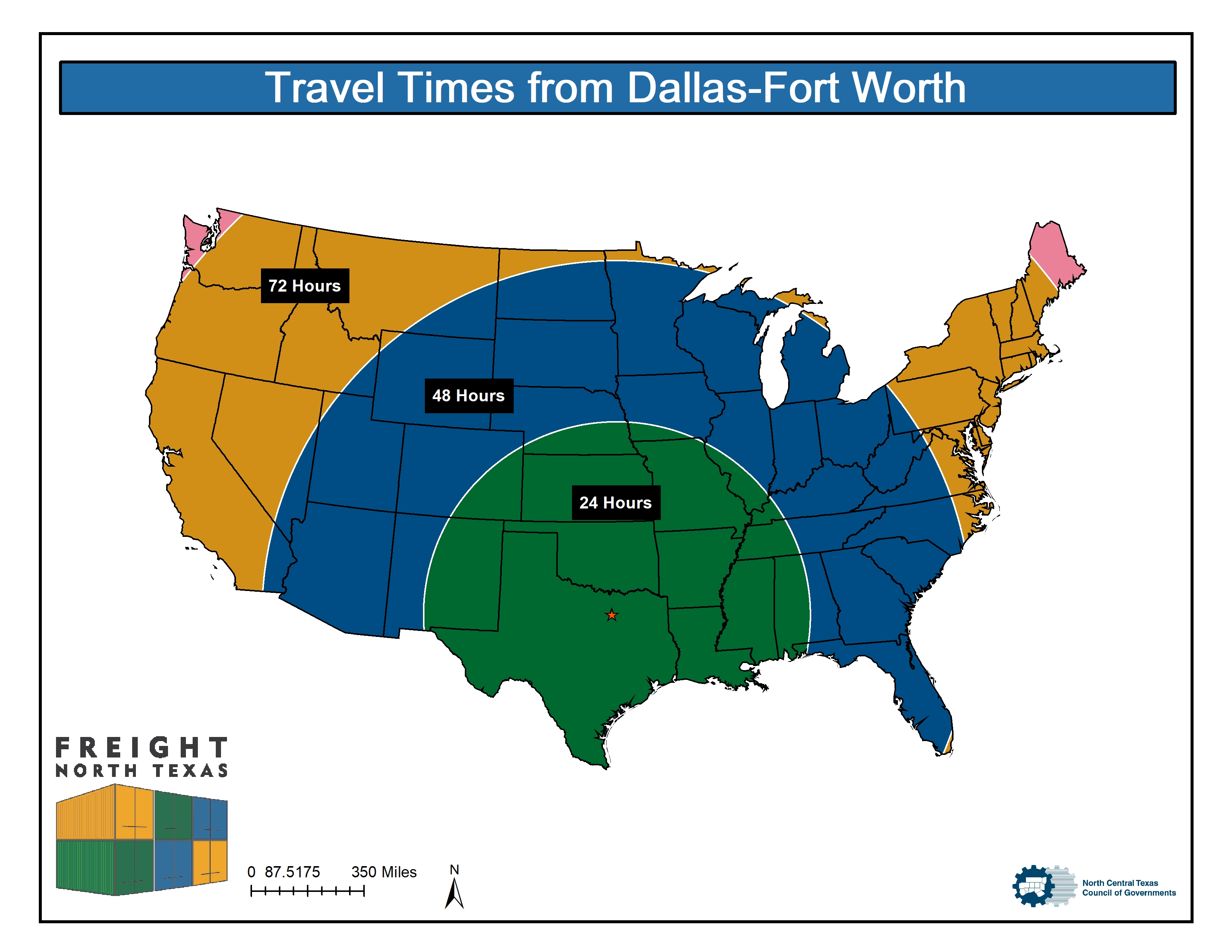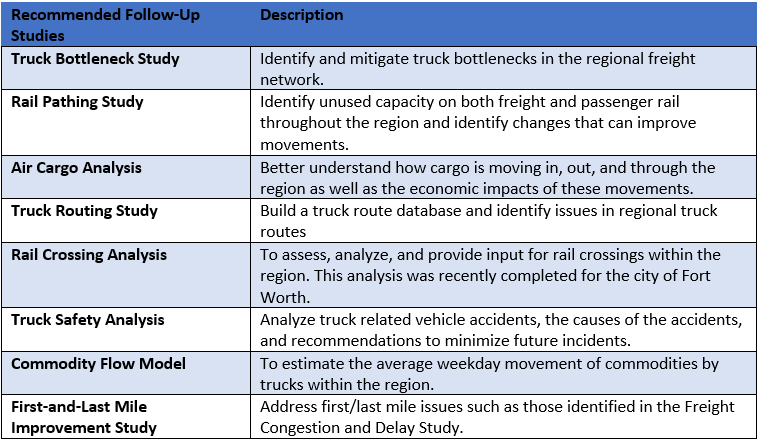Freight North Texas
In 2022, the North Central Texas Council of Governments (NCTCOG) updated the comprehensive study of the region’s freight system. This update highlights policies, programs, and projects that are needed to improve freight planning and operations in the region. Advancing the freight initiatives identified in this study can provide the region with many benefits, including improved safety, mobility, and air quality.
Freight North Texas Document
This report includes an updated analysis of the current state of the system, performance measures, and recommendations for future policies, programs, projects, and studies.
Dallas-Fort Worth Travel Times Map

North Central Texas is centrally located within the lower 48 states, which allows the region to serve as a primary distribution center, or inland port, for the southwestern US and the nation. Trucks leaving the region can reach much of the country within 72 hours.
The economic importance of freight in the North Central Texas region is immense. Freight’s economic importance is evidenced by the devastation that would take place if the flow of freight into the region were to stop completely.
The Federal Highway Administration estimates:
• Within 6 to 12 hours, assembly lines would come to a stop.
• Within 24 hours, hospitals would begin to run out of essential supplies.
• Within 48 hours, service stations would begin to run out of gas.
• Within 72 hours, grocery stores would begin to run out of perishable items
A variety of modes are used to transport freight in the North Central Texas region. Freight is not a transportation mode; rather freight consists of the goods transported by rail, truck, air, or water.
The Freight Planning Program uses goals, policies, program objectives, performance measures, and elements of the regional goods movement network to improve efficiency, safety and mobility in the region. NCTCOG undertakes multiple systems of projects and planning programs in order to foster improved freight infrastructure, economic development, better air quality, and meet environmental justice goals.
The Mobility 2045 Update, adopted in 2022, lists specific policies that encourage the completion of certain goals. These policies are important because they solve or mitigate concerns throughout the region and support better regional freight planning. This increases the movement of goods in a more efficient and sustainable way. NCTCOG’s Freight Team has 13 freight policies that were adopted in 2022. These policies range from freight safety measures, education, better freight planning, and more. For a complete list of these freight policies, view Appendix E: Mobility Options of the Mobility 2045 Update.
Several freight system improvements were recommended to enhance regional freight mobility.
- Improving roadway geometry
- New truck parking facilities
- Railroad crossing improvements
The NCTCOG Freight Land Use Analysis (2022) will serve as a guidepost for the identification of problem areas and regional trends. The Freight Planning Program will seek to empower municipalities and land use decision makers with regional analysis and statutory best practices to prevent land use conflicts from occurring, as well as to mitigate existing conflicts.
Recommended Follow-Up Studies include- Truck Bottleneck Study, Rail Pathing Study, Air Cargo Analysis, Rail Crossing Analysis, Truck Safety Analysis, Commodity Flow Model, First-and-Last Mile Improvement Study.

Staff Contacts: Jeff Hathcock, Mike Johnson, Dan Lamers
